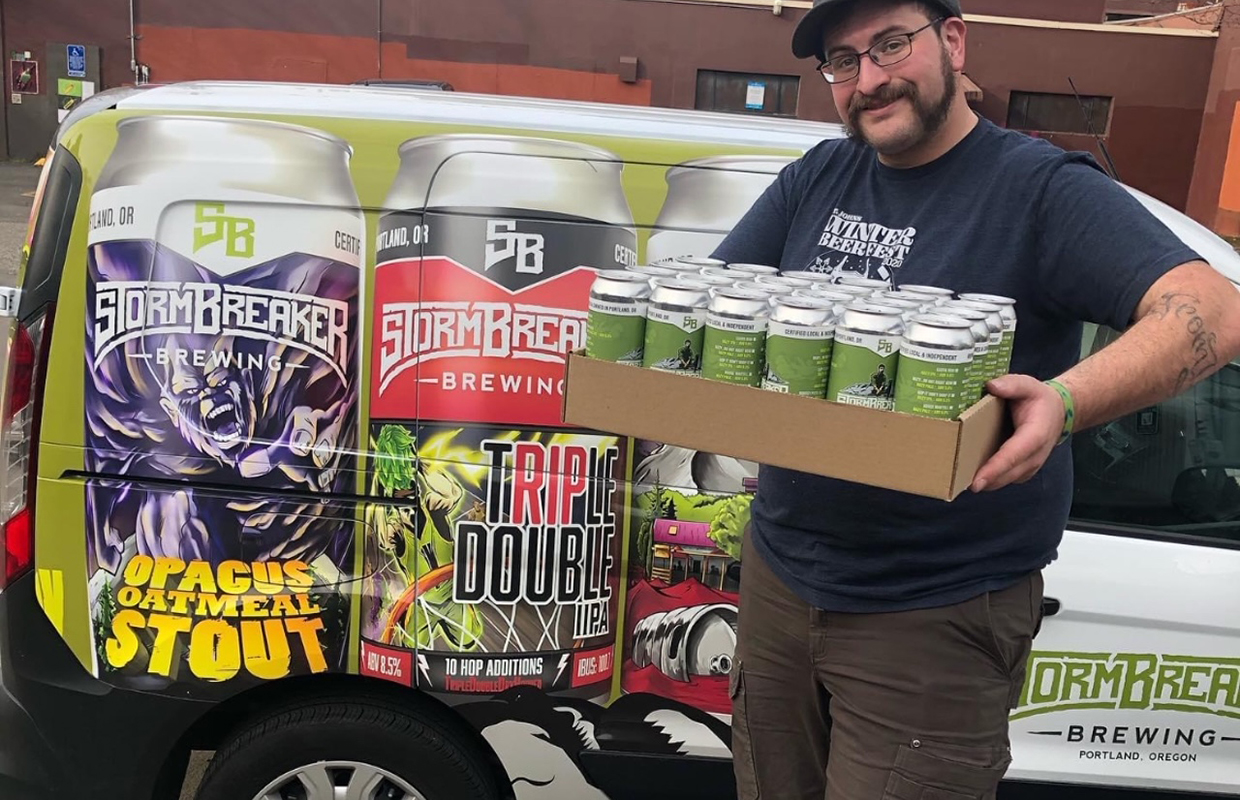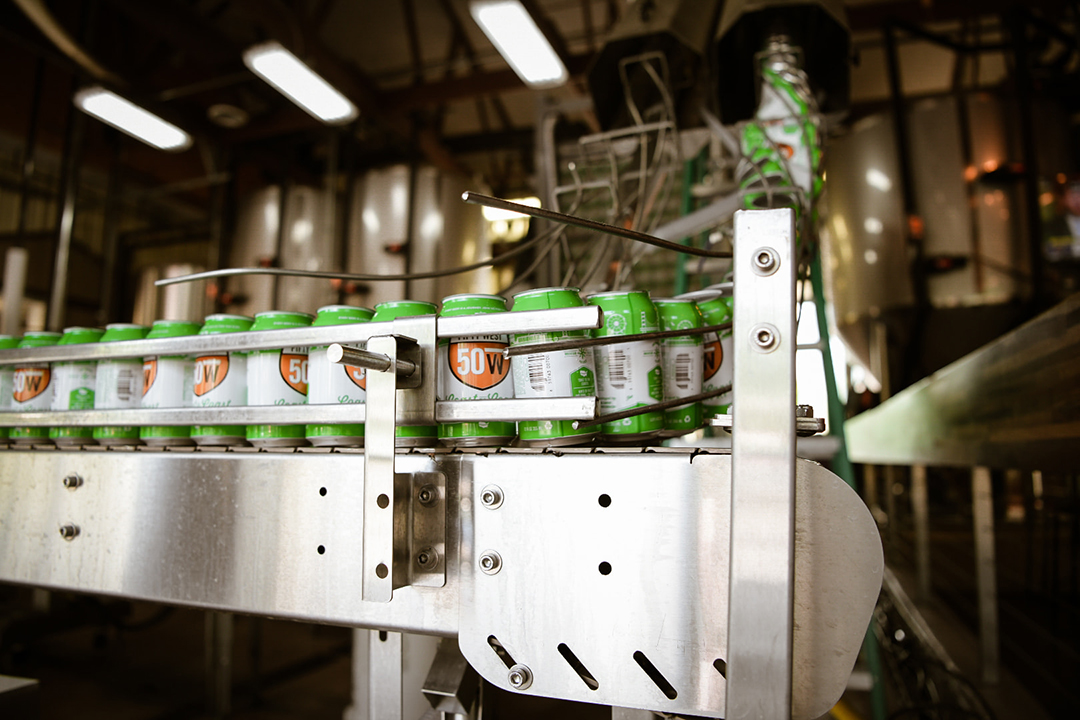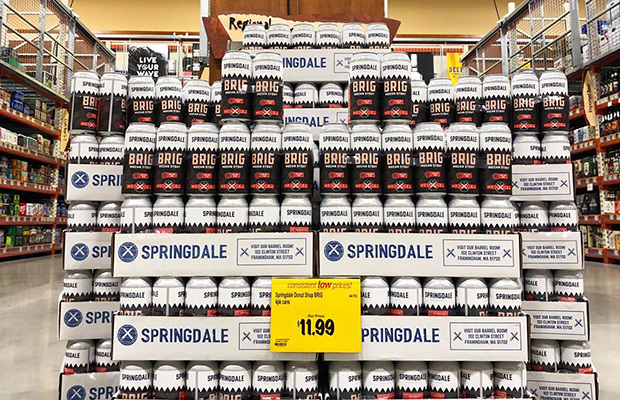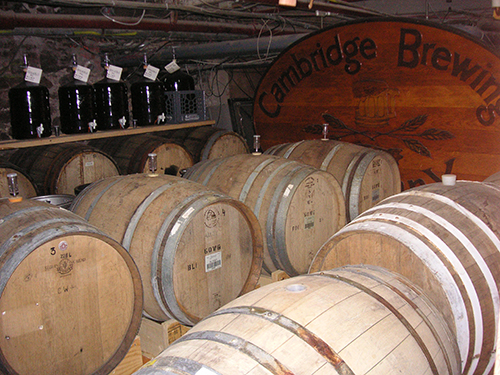
It’s never bad being a little more flexible than the next competitor. When it comes to the distribution of products, especially kegs, being able to get to that tap handle quickly could be some breweries’ best selling point.
“We just recently got into a couple of accounts in the neighborhood because we just happen to walk in,” recalls StormBreaker Brewing founder Rob Lutz. “They asked how soon can you get me a keg? And my guy said, like 20 minutes. He had two accounts like that on the same day.”
Lutz admitted it was a fluke, but that is part of having the flexibility of being a self-distributed brewery.
“If it’s within reason we’ll get you a keg today,” Lutz explained. “That’s a selling point for us is we’ll essentially be there whenever you need us to be there.”
The Phoenix Brewing has been self-distributing since 2014 and co-owner and sales manager Scott Cardwell said the Mansfield, Ohio brewery continues to do so because of the profit margin compared to selling to a distributor.
“It has been successful,” Cardwell said. “Many establishments are used to dealing with two or three distributors with large portfolios, so when we come in for the first time they are skeptical of adding another one.
“We know it could take several visits for them to commit to give us a try. Our sales team is available to buyers for orders seven days a week and is willing to make special delivery trips to help out businesses when they get in a pinch.”
StormBreaker has been self-distributed since Lutz opened the Portland brewery in 2014 and minus a small amount of business outside of the state, the brewery does all its own sales and delivery.
Control, Lutz said, is a big factor in staying self-distributed.
“When you send it out to a distributor, it’s sitting in a warehouse, or in a cooler somewhere, and hopefully, it’s being handled the way that you want it to,” Lutz said. “But there’s not a lot of transparency with what’s happening with product unless you’re actively managing their warehouses. We’re just way too small of an operation to be able to have that kind of control over what the distributor does.
“For us, we know exactly what we’re sending out. If we have a batch of beer that is maybe a little bit longer in the tooth, but we have fresh stuff, we make sure that our customers are getting the fresh stuff. And then we can handle the older stuff however we see appropriate. Same thing with canned products too, we have a lot more control over where that’s going and what people are getting.”
In self-distribution, Cardwell said it allows The Phoenix to offer wholesale customers a wider variety of choices and it also allows the brewery to control product availability.
“We aren’t relying on an outside company to determine what our customers can order,” he said.
Of course, margins are definitely a big part of it as well. But Lutz said that once you get into it, and pay for insurance, cars, and sales reps, then it’s not the “double profit” that you would potentially think it is.
But, he added, with distributing you don’t split the profit between yourself and a distributor.
“They mark it up 30% We mark it up 30%,” he said. “But it’s not like, oh, they make $15 off it and we make $15 off at it, maybe something like they make $20 off it and we make $12 off it.”
Although when a brewery first starts self-distro, it may just be one person doing sales and delivery — and for Lutz, he was doing all that, plus brewing. Once you get past the point of doing that on your own, you are essentially opening a second business that deals with logistics and personnel management.
“You’re managing a staff — your own staff — and like managing any staff, that can be a daunting task to make sure that those people are doing what you need and meeting expectations,” Lutz said. “There are more personalities to manage versus saying, ‘Hey distributor, here’s my beer,’ and then you kind of go away.”
For the first few years, Cardwell was the main sales and delivery person for The Phoenix. He said as distribution expanded, he shared those responsibilities with some key part-time employees, turning their part-time positions into full-time positions.
Today, the brewery has three full-time employees whose duties include sales and distribution.
They have developed basic routes where customers beyond a 25-mile radius can get bi-weekly delivery, and long routes beyond 75 miles get a monthly delivery.
StormBreaker has three vehicles total, including one that doubles as a way to pick up grain orders from a local grain supplier. They have two dedicated sales reps who are drivers and sales. “Until this summer, we only had sales/delivery drivers, there was no dedicated delivery driver,” Lutz said. “We do now have a dedicated delivery driver, which has helped us be able to expand our sales footprint by giving the sales guys a little bit more time to do some off-premise sales.”
Taxes are different too. Lutz said they used to have to do monthly taxes outside of the state.
“I used to have to submit an invoice for every single customer that I sold to, whereas now that we’re with a distributor for that, I just tell them when I sell it to the distributor, and any specifics of where the beer went after that is on the distributor,” he said. “So that can be pretty time-consuming to manage all that.
That’s a big one that people don’t take into consideration. And obviously, that’s going to be state by state.”
Delivery vehicles and keeping them operational is certainly one issue to remember, Cardwell pointed out.
“Keg tracking and monitoring where all our kegs are located is another,” he said. “These issues have been delegated to specific members of our sales team to take care of and in doing so, no one’s workload is overwhelming.”
Sometimes, the biggest pain point for a self-distributed brewery is the buyer who doesn’t want to deal with a single source.
“I use this example of this account where a buddy of mine was managing the bar, and they were going through like two to four kegs of our Mississippi Red a week,” Lutz said. “Well, he left and a new beer buyer comes in. I was still doing the deliveries out of my Jeep at this point. I was calling the guy up, checking to see if he needed more Red, and nothing. Nothing, nothing. Next thing I know, I get an angry phone call, saying he had six empties and I need to come pick these up … right now! And then the guy booted us off tap because he didn’t want to deal with self-distributors.
“He leaves about a month later, goes to another one of my accounts where I’m doing three to four kegs a week, orders one keg from me, and then does the same thing and just pulls us off tap. He was too lazy to want to deal with multiple beer buyers.”
Being a former beer buyer himself, Lutz knows that many buyers don’t want to have to meet with so many people and instead opt for “one-stop shopping.”
“For us to stand out with those places, we really have to be above and beyond to gain that business,” he said. “Sometimes it’s just not happening. That’s a huge pain point.”
Dealing with empty kegs can be a hassle, so Lutz has found a solution that sometimes works.
“We can email or text the beer buyer four times a week. And they’ll tell us you guys never come by,” he said. “Well, no, we come by, but you haven’t ordered anything. So we haven’t picked up that keg with a new order. But they expect us to just come by and get our empties. We’re typically picking up their empties when they put in an order. It doesn’t matter how many times we contact them for an order, in their mind seeing that empty keg shell means we never contact them.
“I’ve started to tell my guys we gotta go pick up their empties and then say you have a credit of $30 to our advantage. And that’s helped. Let them know they got a credit and hopefully next time they’ll place an order.”
Photo courtesy StormBreaker Brewing






Be the first to comment